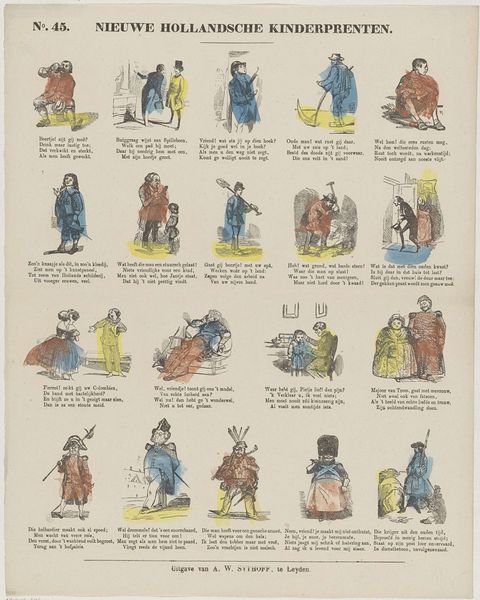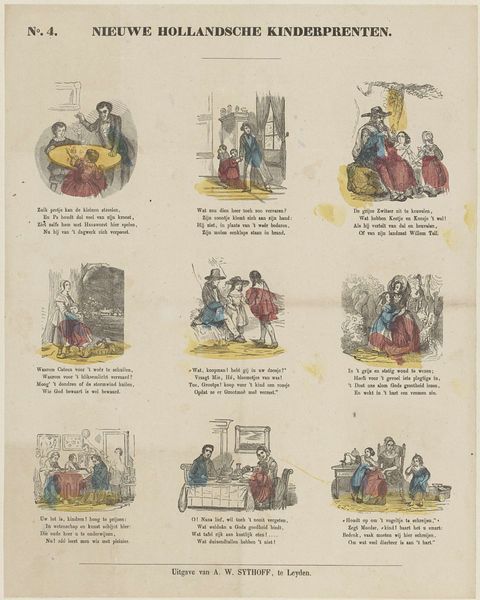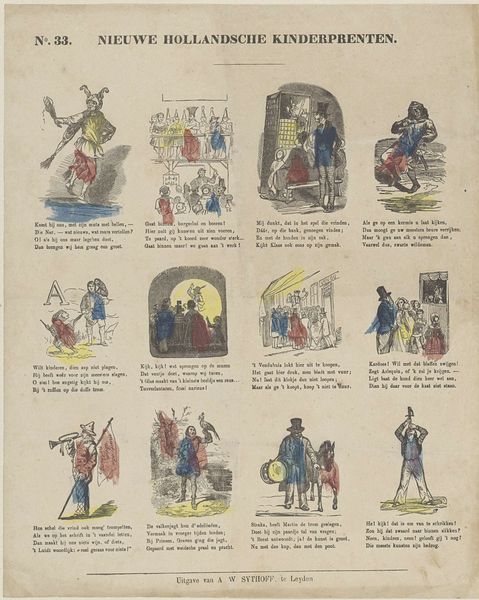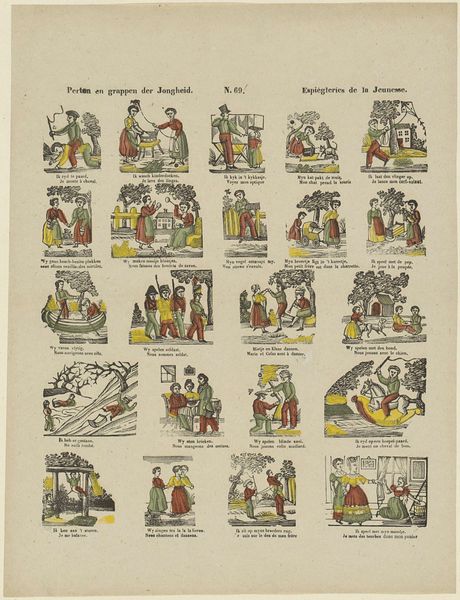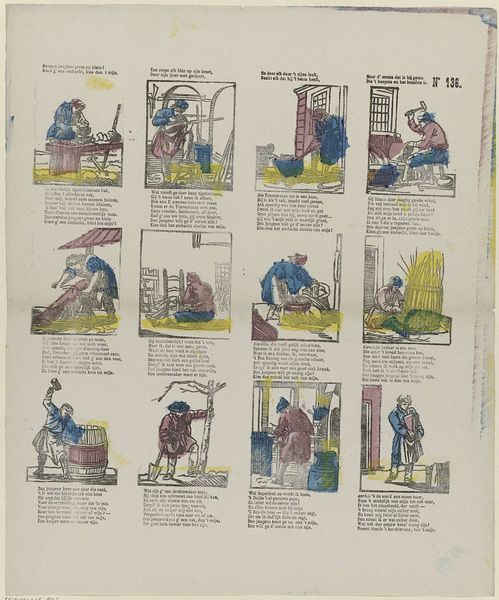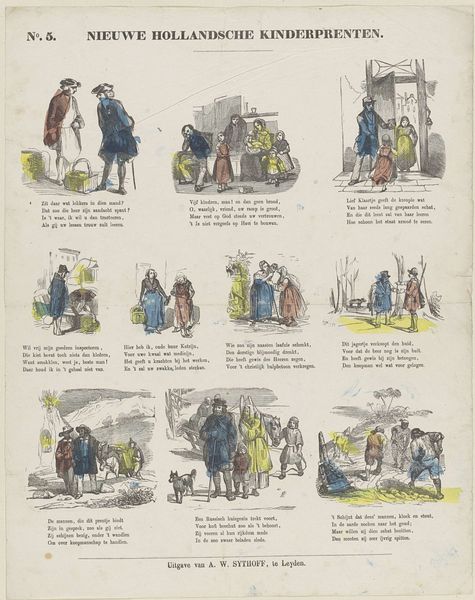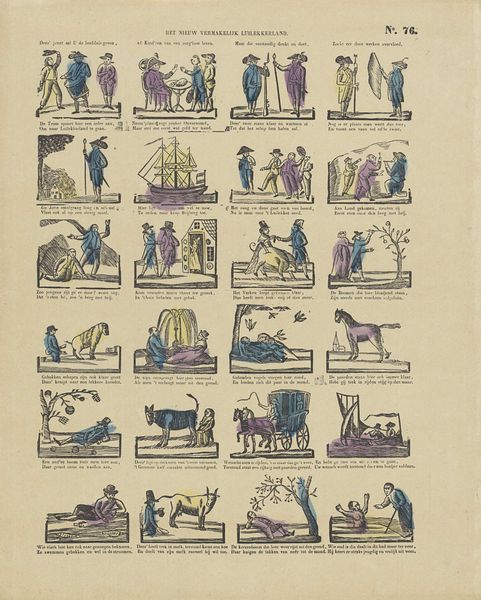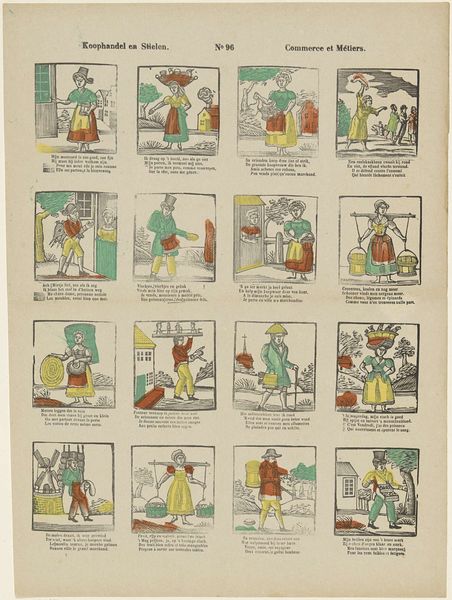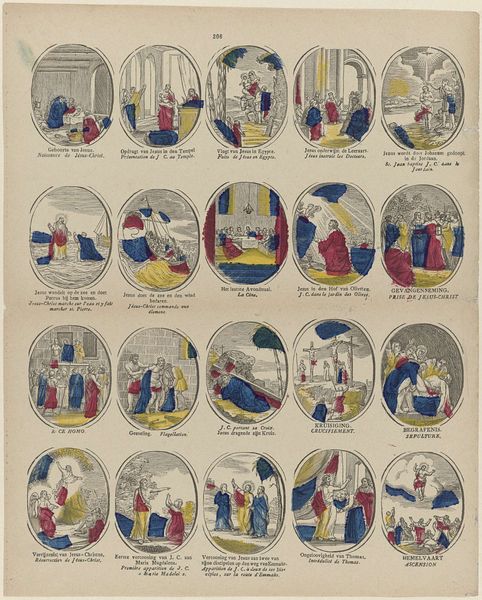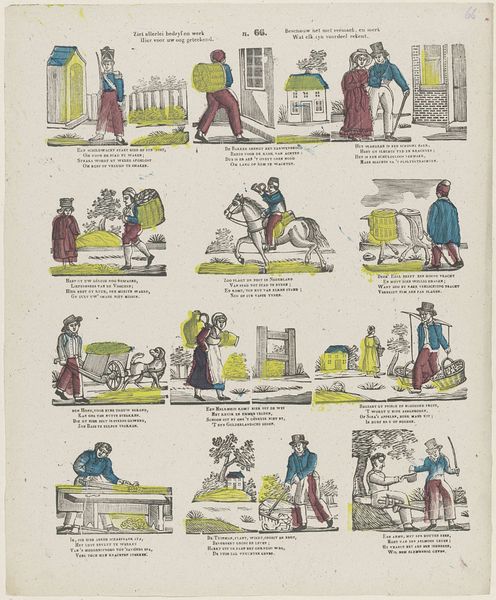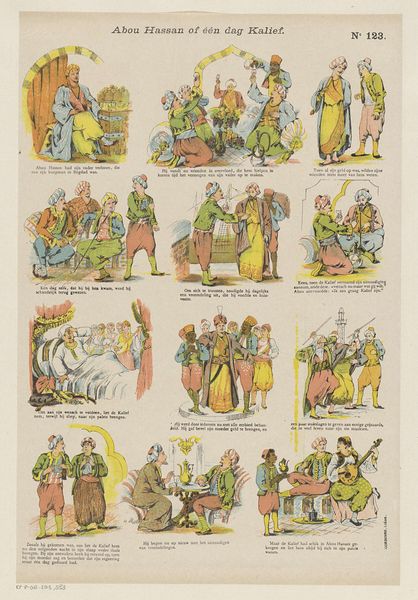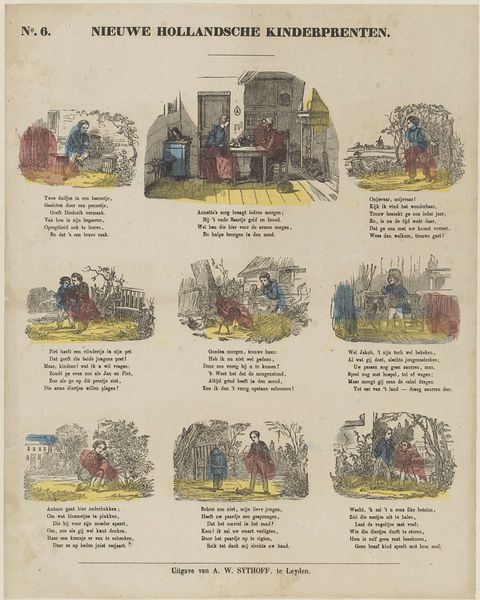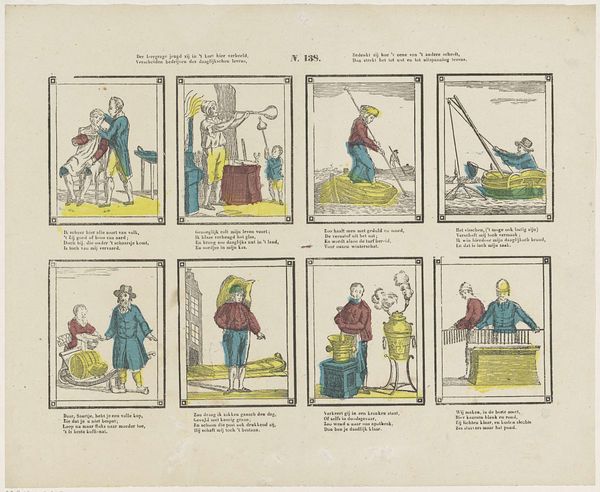!['T volk kon in Rome's glorie-dagen [(...)] by Albertus Willem Sijthoff](/_next/image?url=https%3A%2F%2Fd2w8kbdekdi1gv.cloudfront.net%2FeyJidWNrZXQiOiAiYXJ0ZXJhLWltYWdlcy1idWNrZXQiLCAia2V5IjogImFydHdvcmtzLzRhNTBlMjgyLWNmNDQtNDY5MS05ZmI1LWM1OWZhZWRiMzczYy80YTUwZTI4Mi1jZjQ0LTQ2OTEtOWZiNS1jNTlmYWVkYjM3M2NfZnVsbC5qcGciLCAiZWRpdHMiOiB7InJlc2l6ZSI6IHsid2lkdGgiOiAxOTIwLCAiaGVpZ2h0IjogMTkyMCwgImZpdCI6ICJpbnNpZGUifX19&w=3840&q=75)
graphic-art, print
#
graphic-art
#
narrative-art
#
dutch-golden-age
# print
#
watercolour illustration
#
genre-painting
Dimensions: height 391 mm, width 311 mm
Copyright: Rijks Museum: Open Domain
Curator: This charming print, created between 1861 and 1929 by Albertus Willem Sijthoff, gives us a glimpse into Dutch childhood through a collection of scenes. The Rijksmuseum holds this work, a lovely example of narrative graphic art. Editor: It feels like a sampler, doesn't it? All these little windows into different stories, tinted with pale watercolors. There's a quaint, almost fairytale-like quality to it, despite what I imagine were everyday moments. Curator: The piece is titled "'T volk kon in Rome's glorie-dagen," or, "The people could in Rome's glory days." Yet, despite the Roman reference in the title, the overall composition reflects the visual language typical of Dutch Golden Age art. The placement of figures, the scenes of domesticity, are all strongly reminiscent of Dutch genre painting. Editor: I am so drawn to the horseman image at the middle; what kind of symbolism could we dive into if the topic where childhood and play? We could perhaps consider what they played like, what made their lives and social-cultural moments possible, Curator: Indeed, the work can be seen as an early form of visual education or entertainment targeted toward children. Think of it as an early form of comic strips where each panel offers a snippet of narrative. The goal would've been less pure entertainment and more instilling social values and norms, presented with colorful pictures. The text accompanying each vignette would further emphasize the lessons being taught. Editor: I can see that—they are not necessarily moral lessons, but are rather like snapshots that carry the emotional baggage of a society grappling with what is right for it's next generation. This print functions as a sort of cultural encoding. Curator: Yes, you raise a crucial point, how seemingly innocent imagery conveys powerful social and ethical meanings that resonate across time, connecting past ideals with the present. This reinforces a sense of shared identity and societal aspiration. Editor: Thinking of these illustrations now, they feel much deeper to me than before, like portals through which we can study how the Dutch of this period understood themes of work, leisure, and national pride, and transmitted these values across generations. Curator: Exactly! By analyzing such seemingly simple imagery, we can gain significant insights into the deeper narratives that shape societies and collective identities.
Comments
No comments
Be the first to comment and join the conversation on the ultimate creative platform.
